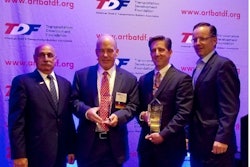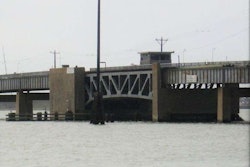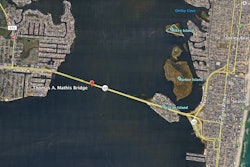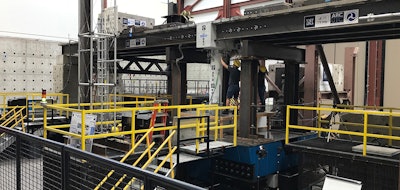 The University of Nevada, Reno’s Earthquake Engineering Laboratory runs seismic tests on six different bridge connections for Accelerated Bridge Construction.
The University of Nevada, Reno’s Earthquake Engineering Laboratory runs seismic tests on six different bridge connections for Accelerated Bridge Construction.The University of Nevada, Reno’s Earthquake Engineering Laboratory recently conducted multiple earthquake simulation tests on a 70-ton, two-span, 70-foot-long bridge with six different types of bridge connections to see which connection would hold up best to a 7.5 magnitude earthquake, according to a university press release. The goal was to prove the connections were ready to be part of Accelerated Bridge Construction techniques to help provide earthquake safeguards.
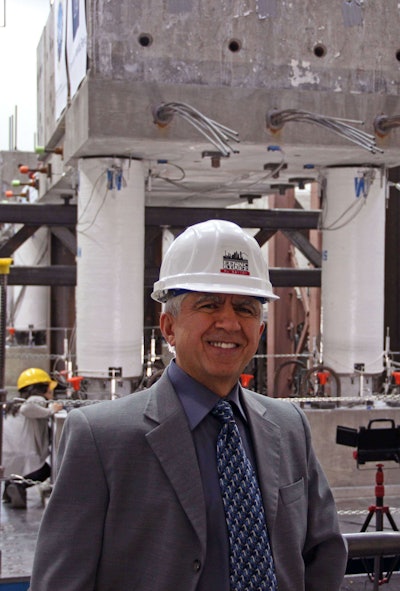 Saiid Saiidi, professor in civil and environmental engineering at the university and director of the Center for Advanced Technology in Bridges and Infrastructure.
Saiid Saiidi, professor in civil and environmental engineering at the university and director of the Center for Advanced Technology in Bridges and Infrastructure.Each connection had already been tested on its own — four were designed to be undamaged, and two were designed to serve as a fuse and absorb the forces of the earthquake by breaking.
“The individual connection tests had given us very good results for each connection,” said Saiid Saiidi, principal investigator of the project, professor in civil and environmental engineering at the university and director of the Center for Advanced Technology in Bridges and Infrastructure, according to the university. “And for the first time, our study combined these connections in a single bridge which endured realistically strong earthquakes. We knew going into this that our individual positive tests did not inherently mean that all of the connections would work together, making this a necessary test.”
The study was part of the Accelerated Bridge Construction University Transportation Center’s (ABC-UTC) project, which is funded by the U.S. Department of Transportation. ABC-UTC’s mission is to develop earthquake resistant precast bridge components and systems, and transform research data into seismic design guidelines to expand the use of ABC methods in seismic zones. The research team consisted of Saiidi, College of Engineering doctoral fellows, doctoral candidates, and graduate and undergraduate assistants.
“Along with avoiding collapse, the outcome of our study showed that all of the six connections performed as expected,” Saiidi continued. “It will be a few months before we can evaluate data from the 280 sensors that we had in the bridge to get more insight about the connections — including transducers, accelerometers, potentiometers, string potentiometers, and strain gauges all to record the forces the connections experienced — but we are now confident to recommend these connections for application in real bridges. I was very pleased with what we learned. Not only do we have a better understanding of how the connections work together, but we have the data now to see how they react under extreme, off-the-charts conditions meaning we can prepare for more than what is expected.”
In addition to creating the project’s base guidelines and practices, the team also helps transition the collective knowledge of the overall project and its seismic studies into an educational environment by developing course modules on earthquake engineering techniques.
“There are many aspects of bridge construction and safety that ABC-UTC is researching, such as ease of construction and durability of joints,” Saiidi told the news agency. “The University of Nevada, Reno is part of the seismic performance portion of ABC-UTC-Seismic, which is the most critical aspect when it comes to bridge connections.”

